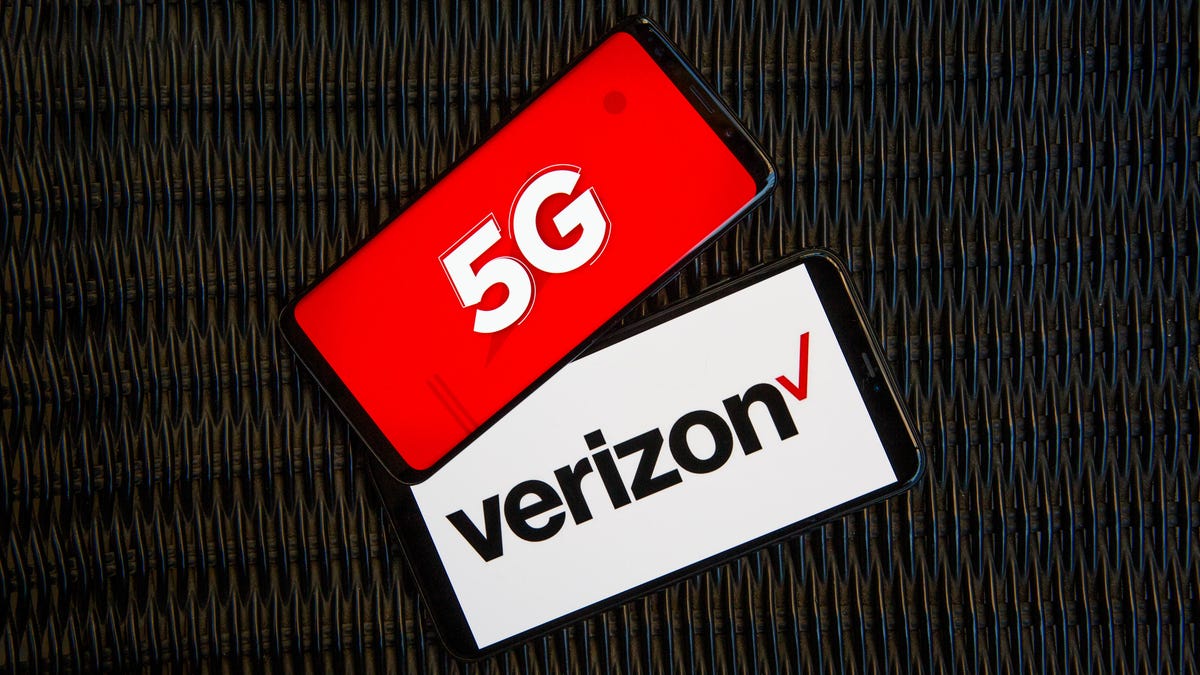Verizon's 5G home broadband gets speed, coverage boost in Houston
The benefits have already been rolled out in most of Verizon's other 5G Home cities.

Verizon continues to expand on its 5G plans.
Verizon has led the charge in using 5G as an alternative to standard home broadband, even if the service is in just a few markets with a limited number of customers. But the company is upgrading its 5G Home offering in Houston to cover more people and offer a speed boost.
Houston has been an early 5G city for the carrier, with 5G home broadband being offered in parts of the city since 2018. But the early network, like Verizon's other original 5G Home cities, used a nonstandardized version of 5G called 5G TF, which ran on its own proprietary standard rather than one the industry embraced.
Verizon is upgrading the Houston market to the industry-standard version of 5G, which the company said will expand the coverage area by one and a half times. Download speeds will double with the technology changeover.
Beyond the Houston transition, Verizon also said it's working with a company called Pivotal Commware to bring 5G Home to apartments and dorms through repeaters that can extend 5G signals. The companies are trialing the technology in Dearborn, Michigan.
The moves get Verizon closer to fulfilling the promise of 5G as a true replacement for cable or DSL. By switching to the industry-standard version of 5G, Verizon will be able to reach more customers and offer a faster service. The company isn't the only one looking at offering fixed-mobile broadband as a service -- T-Mobile has also talked about its ambitions to become a home broadband provider through 5G.
As for Verizon, new 5G Home customers in the Houston area will be able to take advantage of the upgraded network when they sign up for service. Existing 5G Home users will be able to continue to use their current service before being transitioned to the new network at some undisclosed point in the future.
Houston is the latest of the early 5G home broadband cities making the transition to the industry standard, known as NR. Those cities include Los Angeles, Indianapolis and Chicago, with the company expanding its home internet offering to Detroit earlier this month. Sacramento, the other original city, will keep the proprietary 5G TF network for now and is still waiting on an upgrade.
The carrier said it will have 5G Home internet available in 10 cities in 2020.
Still waiting for nationwide 5G
The transition to 5G NR for its home broadband network isn't the only major networking endeavor Verizon is undertaking in the coming months, with the carrier previously discussing plans to offer a nationwide low-band 5G network for mobile devices in 2020.
Its current network uses a super-high frequency part of the spectrum known as millimeter-wave. That makes it among the fastest 5G offerings available, even if that high frequency means that the signal struggles to penetrate into buildings and reach large areas.
Rivals T-Mobile and AT&T each already offer broader 5G networks using lower frequency "low band" spectrum, with T-Mobile's available to over 200 million people nationwide and in all 50 states and AT&T's recently expanding to cover 160 million people. The speeds are far less dramatically high as millimeter-wave, but you're likely to get the signal.
AT&T and T-Mobile were able to reallocate existing low-band spectrum they owned for use for their respective 5G networks. Verizon, however, has been waiting for a technology known as Dynamic Spectrum Sharing that will allow it to turn some of its existing 4G LTE airwaves into 5G without disrupting 4G service, creating a larger 5G network that works around the country as well as indoors.
AT&T earlier this month began using DSS to boost its 5G network, but so far has limited the deployment of the technology to just "North Texas."
While Verizon has yet to announce when exactly in 2020 it will turn on the new low-band network, Heidi Hemmer, Verizon's vice president of network engineering, said in an interview that when the carrier does flip the switch, the network will be nationwide and cover at least 200 million people.
As with other low-band networks, speeds on the Verizon's low-band network will be largely similar to a good 4G LTE connection as opposed to providing the gigabit speeds its millimeter-wave 5G offers in parts of 35 cities around the country.
On Monday Verizon announced that it completed a trial of DSS on live networks in Texas and Minnesota, taking advantage of 5G on lower-bands of wireless spectrum that had previously been reserved solely for 4G LTE without disrupting the 4G service.
Hemmer says that Verizon will take advantage of its full portfolio of spectrum -- which include 700MHz and 850MHz in the low-band space and 1.9GHz in the midband -- to offer 5G through DSS.

